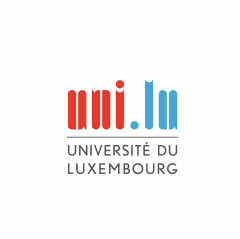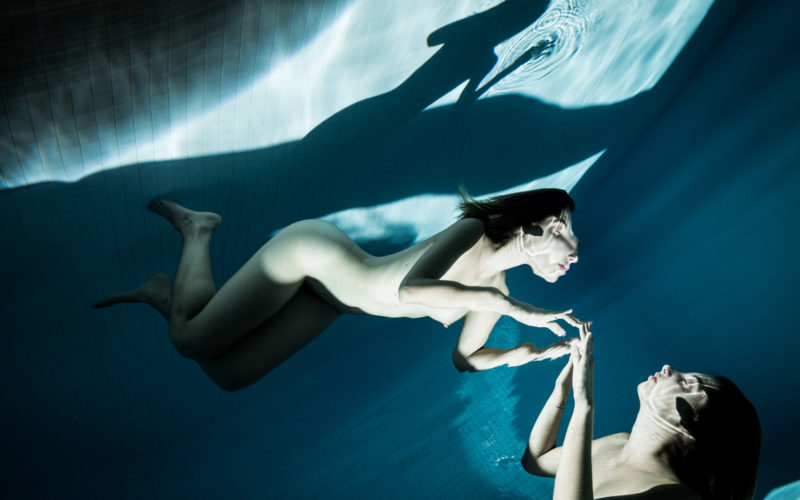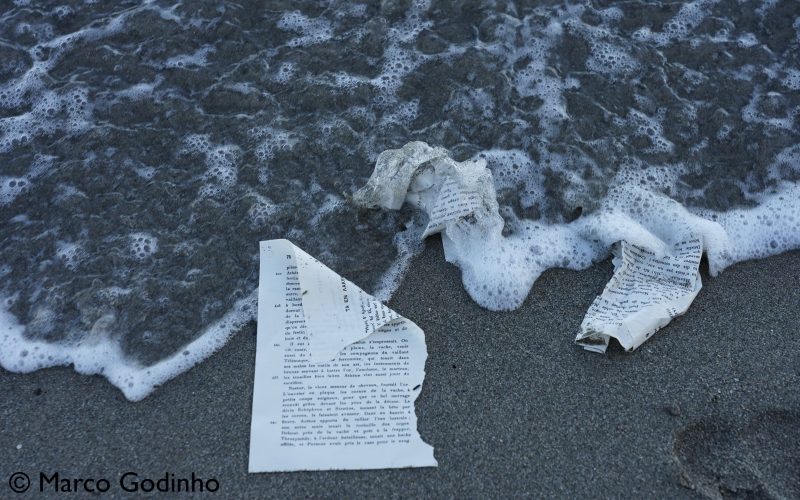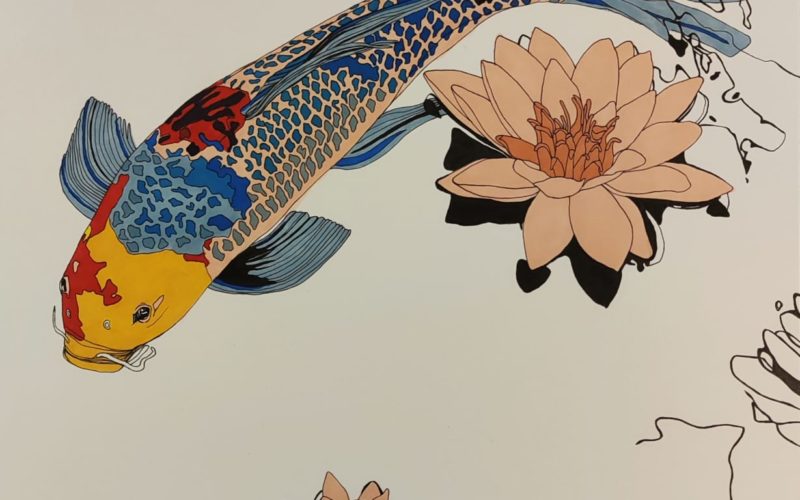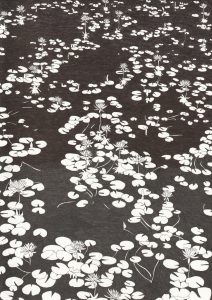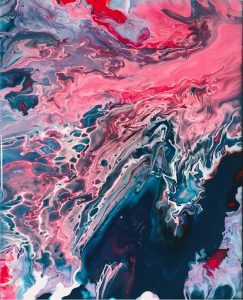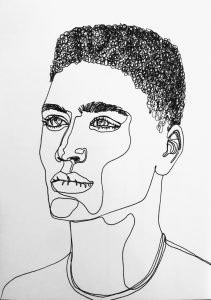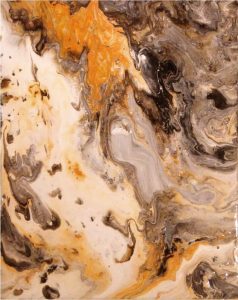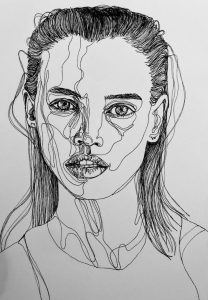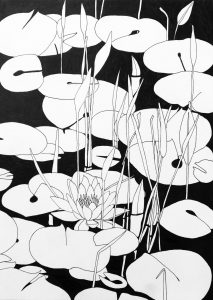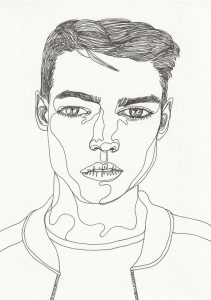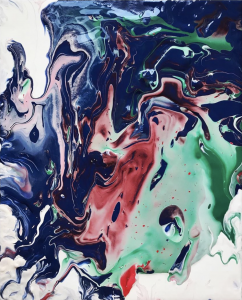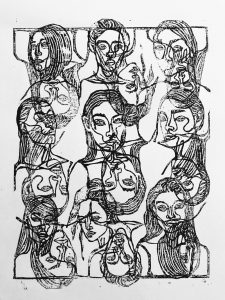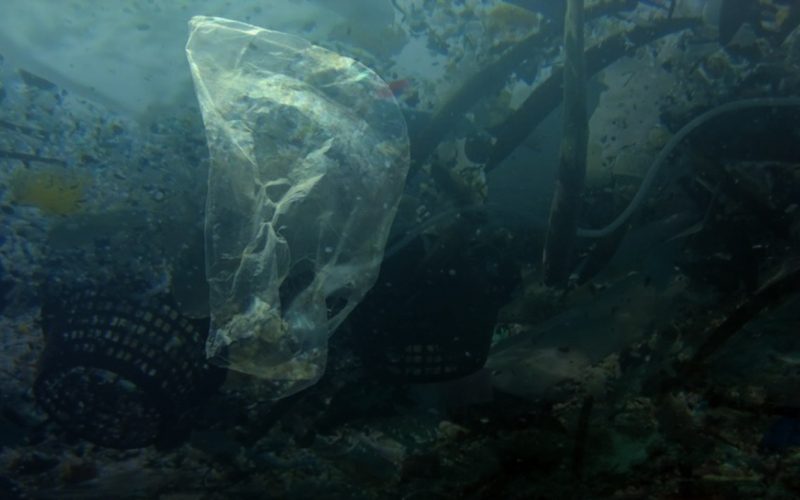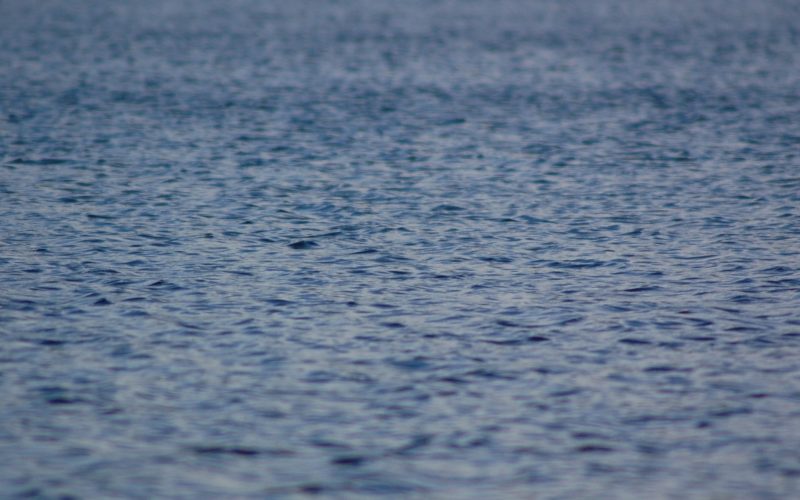Art Events and Performances
Water, Towards Reconciliation and Joy - by Jean-Marie Ghislain & Leina Sato
Water, Towards Reconciliation and Joy
by Jean-Marie Ghislain (photo) with the collaboration of Leina Sato (voice)
Link to the virtual gallery: https://ghislainjm-xrgallery.weebly.com/
For the best experience, use the Google Chrome browser and avoid any mobile device. Make sure to slide on the floor to move from one room to another
Each of us remembers the well-being and joy experienced during a swim. Our cells remember and we renew with our origins, unconscious reference to the universal matrix and therefore to femininity. Water brings us closer to ourselves.
Far from a narcissistic approach, because at no time will they perceive their own reflection on the surface, many women wished to live this deep experience, initiatory to give themselves up to water in a total letting go and let the magic operate.
As a kaleidoscope of the soul, the water / air interface takes us into another time and space, as if the emotional state of the subject affects one’s own reflection, making him discover a new dimension of his being. It is also a dialogue between photography and painting both in terms of textures and chromatic ranges through the subtle transformation of information on the surface at the whim of the movements of water.
These underwater landscapes reveal us the impermanence, the infinite change of our perception of the place under the influence of external elements.
The Covid crisis has allowed a profound evolution of the project: in addition to the reconciliation of the woman with her image, we notice the emergence of an unspeakable joy, perceptible in the more recent works. Echoing the inner transformation of many participants and the photographer, light and color reflect a new relationship to the living. This “wave” or “vibration” brings the images beyond the original project. It is also an open door to a plural expression closer to the richness of classical and modern painting (among others, El Greco, Turner, Hans Bellmer, Francis Bacon, Lucian Freud) We are witnessing a real liberation, a new breath, ample and luminous.
The spectator will immerse within this underwater environment crossed by poetic voices.
· The online vernissage will take place on Tuesday, 13th of July 2021 at 6pm.
· For more information on the artist, please click here.
· To learn more about the Ocean Seed Foundation, please click here.
Immersion in the artistic work of Marco Godinho in the presence of the artist
Immersion in the artistic work of Marco Godinho in the presence of the artist
Session introduced by Adilia Carvalho
· This event will take place online on Thursday, 15th of July 2021 at 12:00.
Sandrine Borgniet, artist and designer
Sandrine Borgniet, artist and designer
Sandrine Borgniet is an artist based in Brussels. In 2019, she obtained her Bachelor of Illustration from the Ecole Supérieure des Arts (Brussels). Sandrine is passionate about decoration, architecture, photography, travel and contemporary art. It is from her creative mind and talent that emerged the design of our logo and our poster.
· To learn more about the artist and her work, please click here.
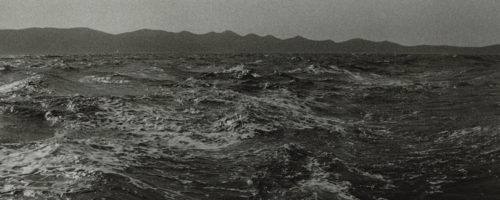
En quête de sublime : les mers dans l'œuvre d'Hervé Massard
Simone Grossman (Bar Ilan University, Israel): En quête de sublime : les mers dans l’œuvre d’Hervé Massard
Les photos de mer d’Hervé Massard, artiste plasticien franco-viennois, émanent de la constatation que les représentations produisent des réalités fragmentaires. La haute mer est selon lui l’espace de la non-figuration par excellence : « Avec les mots de Nietzsche “Dieu est mort”, la représentation semble être arrivée à sa fin. Mais peut-il y avoir une fin de la Représentation lorsque celle-ci est portée par notre désir de savoir et de liberté ? Et Nietzsche de poursuivre et demander comment donc on aurait pu boire la mer entière. Ici c’est du projet prométhéen dont il est question, et la mer en est la Représentation ». Massard considère la mer comme le « théâtre de la rencontre du Fini et de l’Infini, et par là la forge possible de toute Représentation ». « Si la Fin de la Représentation devient un concept artistique, c’est qu’au regard de l’Art la mer se trouve dans un angle mort ». Sa conception de la mer comme « l’infini du désir, et ce à partir du rivage » l’a mené à entreprendre en 2016 un périple maritime dans le cadre du projet conceptuel « All at sea ». La circumnavigation d’artistes entre trois points, le Passage du Nord-Est, l’île Stewart et le cap Horn, en référence à The End of a State (Robert Jelinek et Hervé Massard) actualisait la remise en question du savoir dans une zone gouvernée par l’Incertain. Trois sculptures disséminées aux trois points devaient être récupérées par l’artiste-navigateur. Représentant le Prométhéen dans l’humanité – le pouvoir, la liberté, la connaissance, et bien plus encore – les trois sculptures réunies sur le bateau représentaient la haute mer, créatrice de réalités idéales. L’examen de quelques photos de Massard montrera l’émergence d’un art conceptuel sur la mer, hors de toute référence au passé.
Ecological Anxiety Disorder - by Sandy Flinto & Pierrick Grobéty
Ecological Anxiety Disorder
by Sandy Flinto & Pierrick Grobéty
Ecological Anxiety Disorder embarks the viewer in a dreamlike and surrealistic universe. Between travelogue and mythology, four dancers go on an expedition in a world apart: the 7th continent. Plastic islands, composed by circular currents in the middle of our oceans. In this terrible relation to the environment, the border between the illusory and the real is blurred: the ancestral fears of sea monsters, at once appalling and fascinating, reappear between the symptoms of this new pathology. This anguish feeds on apocalyptic fantasies. Far from falling into moral traps, this immersion in the abyss takes us on a fascinating scenic journey.
“Free man (…) the sea is your mirror”, wrote Baudelaire.
Plastic, an emblematic material of a carefree economic model. -Insoluble. Madness, a paradox that accompanies this titanic effort to want to restore the world. The madman, despite his confused perception of the outside world, is often represented as the only one to have a healthy reaction.
In Ecological Anxiety Disorder, performers seize a synthetic ecosystem in the middle of a lost paradise. An odyssey at once poetic and disturbing, which choreographs body and matter.
· This event will be streamed on Monday, 12th of July 2021 at 18:00 after the opening ceremony.
· For more information on this event, please click here.
Other projects of Sandy Flinto and Pierrick Grobéty
Some sequences of Sandy Flinto and Pierrick Grobéty’s latest work Déluges, a video art work with Piera Jovic and Giovanni Zazzera, presented during the 8th Nuit de la Culture in Esch-sur-Alzette:
 · For more information on the artists, please click here.
· For more information on the artists, please click here.
Public reading of Jean Portante's poems by the author himself
Public reading of Jean Portante’s poems by the author himself
Session introduced by Sebastian Thiltges
· This event will take place online on Thursday, 15th of July 2021 at 12:00.
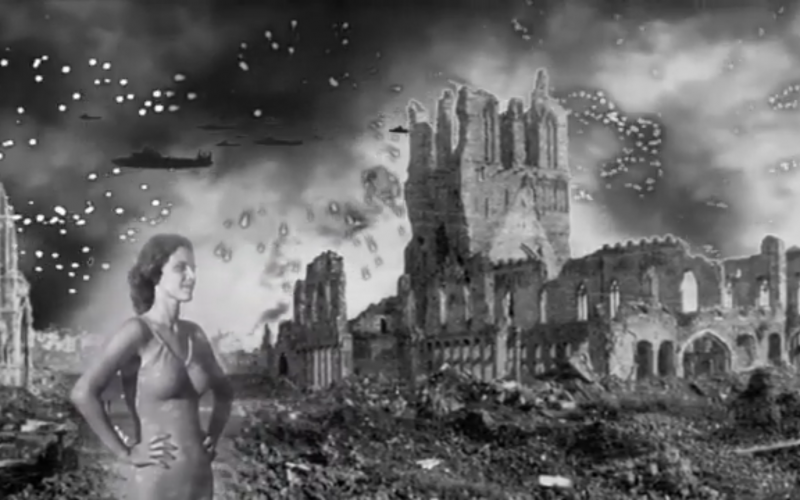
L'eau-delà des villes - by Alexis Vanderweerd
YouTube link to the digital installation: https://youtu.be/nTWIaC6965I.
A collage of contemporary reveries and memories, this video installation intends to retranscribe the aquatic imaginary of past and future modernity. We leave between stellar water and the water at the bottom of the oceans, to go back to atmospheric water, while crossing the swamps of our sewers. This creation proposes to be “this inner water, this subterranean lake from which an altar emerges, [it] will be a ‘settling basin for polluted water’”. (Gaston Bachelard, L’Eau et les Rêves, Paris, José Corti, 1942, p. 171)
Below the Surface
by Marie-Anne Lorgé (art critic)
…..The vowel O is blue, it has been like that since Rimbaud. And blue is the colour that symbolises the sea. And when artists talk to us about water, it’s not so much about rivers, which have been subjected to so much violence since the industrial revolution, by diverting their beds and blocking their channels, but it’s first and foremost to take to the sea. With its backwash, its shipwrecks, both human and ecological, its mirages, its real or imaginary sparkles, its always fantasized elsewhere and its myths. When, for example, Marco Godinho summons the legendary Homer, supposedly blind, his poetic (or semiotic) licence dares a “Ô mer” (“O sea”).
…..In any case, at the sea, man measures his condition. And his fears. These are the fears that inhabit the artistic visions proposed at the 12th IAWIS/AIERTI Congress, an event of worldwide scope organised by Nathalie Roelens, professor at the University of Luxembourg.
…..If for the visual artists, Jean-Marie Ghislain (Belgian underwater photographer) and Hervé Massard (Franco-Viennese visual artist), it is a question of making people see – by favouring an aestheticised image, often carrying a narrative charge – for the writer, the Luxembourg poet Jean Portante, it is a question of seeing with words.
…..As for Marco Godinho, a conceptual artist of Portuguese origin, who is as nomadic as Jean Portante, his language, which is as visual as it is textual, blurs codes and representations: linked to wandering and migration, his work is a writing process that is always born of an experience or a contemplation, which never ceases to give birth to a drawing, a video, an installation or a performance in which desire prevails. The desire to see a buried reality, even when the mistral is absent.
…………………………………………………………………* * *
…..This is what is at stake in Ecological Anxiety Disorder, a hybrid visual and sound creation, between installation, video, performance, theatre and contemporary dance, by the duo Sandy Flinto & Pierrick Grobéty, associated with Daniel Marinangeli for the dramaturgy.
…..The show – because it is one – for lack of really disturbing (or is it?), for lack of being a lesson offers a journey … to say the least, singular, eventful. Described for the cause as an odyssey, by antonomasia and in reference, for centuries, to Homer, the aede, the storyteller, the maker of allegories both natural and divine.
…..And so, terrible is the journey to this now terrifying 7th continent, formed by the plastic waste we produce/dispose of in industrial quantities, which has sprung up like a propylene monster in the middle of the ocean. A continent all the more terrifying because the ocean, according to Baudelaire, is our mirror.
…..The film (45 minutes long) begins in total insouciance, with four characters (the four dancers in the performance) playing with a beach ball. A stereotype of mass tourism. We laugh… while a voice-over narrates the tragedy that is taking place. It is deafening but inaudible to the four players. And so, offshore, a ship sinks and spills 45,000 tons of coconut oil. The voice sinks into the foretold chronicle of a lost paradise.
…..It is a dystopia. Drowned in darkness, a night of hydrocarbons. And structured in sequences, all choreographed/choreographic. The body is a material immersed in a sound universe, with a striking narrative potential, and the bodies are one with this concrete/matter making up the new horizon.
…..From swimming, we move on to suffocation, the characters, prisoners of a synthetic snow, a polymeric rice, then in fishing nets, becoming pitiful fish, helpless witnesses of the bacterial invasion due to the thaw. The humans go mad. Struggling against a monstrous sea of ink cartridges. The nightmare is then pierced by a voice, that of an improbable mermaid. That the humans escort in chorus. The choir is bitter. It is a choir of pretense.
…..And then, it’s the storm. Dressed in an orange parka, as if to cross an eternal winter, the castaways, in a burst of energy, set off on an expedition, determined to build elsewhere… by renouncing artificial needs. Throw away yesterday’s life and occupy the 7th continent… on the ruins of before. Storms again and mirages. Narration in no way classical, velvet tone to numb the cruelty of the tale. New siren and strobe lights. Civilization disappears. Between laughter and screams. Hubbub, confusion, hysteria. And then, at the height of disenchantment, we start playing ball again. “They lived happily… and never had children.”
…..The strange and disturbing scenes that follow one another tease out the apocalypse without sinking into it, banking on awareness through beauty. And through the absurd, this surrealist mechanism that conveys the omnipotence of the dream, but also, paradoxically, its downfall, thus pointing to humanity stuck in the implacable absurdity of the world.
…………………………………………………………………* * *
…..Immersion also with Jean-Marie Ghislain. Who only choreographs the body. And even awareness through beauty.
…..For Ghislain, water is first of all a terror, linked to an intimate tragedy, the death of his mother by drowning. And it is to overcome his fear that the artist… goes down. In apnea. An exercise as mental as it is physical, which is coupled with another test: to be in contact with the most hated predator on the planet, the shark. And to photograph it, to sublimate it, as a catharsis, a way of converting resentment – to take revenge for both the injustice (the drowning of the mother) and the symbolic wrong (embodied by the shark) – through aesthetics.
…..However, in “Towards Reconciliation and Joy”, there are no sharks. But mermaids. Not followers of Melusine, the legendary creature who founded the history of Luxembourg, but “ordinary” women – 45 in all – and naked. They are willing divers, but a dive that looks like a swim. And in a swimming pool, no less. A form of silent happiness and body contact with colour (apparently without a filter, just by virtue of the movement of the water on the surface). As well as with a kind of original, universal liquid.
…..According to the philosopher Cynthia Fleury, “l’amer (the bitter), la mère (the mother), la mer (the sea), everything is tied together”. With Ghislain, as a bonus, everything is in harmony. The joy of abandoning oneself to the water in this way, in a total letting go, is obvious, clearly leading to a fraternisation with one’s body. With the image of one’s body.
…..“Water brings us closer to ourselves”, this is the beautiful challenge of the project, where Ghislain – who has invested two years in it – betrays his own part of darkness and light. In “Towards Reconciliation…”, a transfer of experience and a way of definitively idealising the mer (sea)-mère (mother) couple, it is about himself that he speaks.
…..At the same time, in this attempt at feminisation, there is eroticization. Undeniably. In the bath, the woman writhes, as if in an enjoyment of the loins, without erasing anything of the anguish. And “to look is to follow the curves, to caress, to possess imaginatively”, at least according to Laurent Jenny in his essay Le Désir de voir (The Desire to See), who specifies, quoting Valéry: “The visible world is a perpetual exciter: everything awakens and nourishes the instinct to appropriate the figure or the shape of the thing ‘constructed by the gaze’.”
…..Nevertheless, this is not where my favourite work lies. It follows the underwater walk of Leina Sato, the photographer’s apneist wife, a strange solitary fish, who, while whispering the poem “Home Coming”, lifts the sand from the bottom, thus freeing an unprecedented environment, a landscape as unstable as a fog, which envelops at the same time as it suffocates, erases. It is the reign of deafening silence, of wandering perception: no place, no body. Like the beginning of time.
…………………………………………………………………* * *
…..It is not the shark, but the whale that the poet Jean Portante invokes. And here too, the mother is never far away.
…..During his tireless quest for the white whale, when Melville describes his malaise, it is to understand that it is high time to take to the sea. Except that this is not a matter of sailing. It is the existential sea that falls on the author’s head, as it does on Jean Portante’s, who never stops wandering, going towards the horizon, and above all finding somewhere else… without necessarily crossing the waves.
…..But the sea is stubborn, on his mother’s hospital bed, in the sheet she holds between her fingers, the poet reads the sail of a boat. Attached to the roots, Italy. In relation to the father, the story undulates, it is migratory, turned towards the slag heaps. Beyond that, Portante carries not bitterness (l’amer), but grief, soreness (l’amertume), and his existential resource is then… to take to the sea. Like a permanent runaway. Never satisfied. Always unrepentant.
…………………………………………………………………* * *
…..“Every man, at some time in his life, has had the same thirst for the ocean as I have”, wrote Melville.
…..With Hervé Massard, the ocean corresponds to a desire for immensity. Moreover, with him, the sailor does not measure himself against the calm waves, but against the high seas. Impossible to represent, because it is not a landscape.
…..If there is no plane geography, there is no vision of the surrounding physical space either, as classically conceived by (Euclidean) geometry.
…..And therefore, with Massard, maker of epiphanies, or apparitions/disparitions, we enter another dimension. With signs of light written on the surface. On the surface of the moving mass as black as night. Knowing that black concentrates space, while light vaporises it. The end result is to disorientate us. Moreover, there is nothing that film cannot translate, starting with the breath of a storm, the fat liquid paved by a moon or dappled by spectral reflections.
…..Massard’s water is that of memory and oblivion at the same time, that of time which takes everything away and recreates everything.
…..In practical terms, Massard works in the field, taking the boat for weeks at a time, escorting other sailors like a lamppost. He can be seen in The End of a State (with Robert Jelinek) and All at Sea, programmes that use a scientific approach to explore what art can set in motion.
…..By joining these programmes, Massard has the opportunity to confront what he thought he knew before going to sea with the ever-changing reality at sea. And his challenge is to create a new reality: in this way, as a way of painting on water with light, he brings symbols – including the infinity sign and the square – out of/onto the uncertain (marine or maritime). In other words, “he gives form to the formlessness of the ocean”.
…..Massard is an artist of sublimation. And, for the duration of an exhibition, to give us a glimpse of a non-geographical sea, an “imaginary sea”, a territory between the visible and the invisible, a breeding ground for sensitive and metaphysical experimentation (dixit Cynthia Fleury) is to give us an aptitude for poetry: an approach that is also part of the sublime. The intoxication is absolute and our gaze is definitely different.
…………………………………………………………………* * *
…..Poetry as an outcome is also at work in Marco Godinho’s nomadic practice, where writing is therefore an important part, as are time and ritual, which is a way of connecting with others.
…..The proof is in Offrir quelques mots à la rive, as part of WaterWalls, in Esch-sur-Sûre, a festival infused with circular economy (recycled materials) and participatory project.
…..And so, Offrir quelques mots à la rive is a circular platform between water and forest, where a golden megaphone is installed, like a weathervane, sensitive to the wind, from which the words fly away…
…..This is because upstream, during his writing residency, Marco has knitted together stories inspired by his encounters with the inhabitants of the region, and it is these fragments of life and other intimate or universal stories linked to the natural elements that the artist shares aloud, with his brother Fabio, during readings and performances.
…..In addition to this poetic performance creation, the whole point of the project is to initiate a ritual: to invite the spectators to take possession of the megaphone at any time, in order to sing/declare/shout out whatever is dear to their hearts and thus make themselves “an offering to the shore”. Not only does the project come to life in this way as a collective, but it transforms the wooden gazebo into a link between physical and mental spaces.
…..There is also Written by Water, Marco Godinho’s flagship project, a work-device developed – at the 58th Venice Biennale (2019) – in several pieces, material (installations, videos) and immaterial (performances).
…..In Written by Water converge Marco’s journeys, undertaken from North to South, in contrast to recent migrations, “in search of ancient narratives for which the Mediterranean served as a setting and which today are still perceived as the pillars of a common imaginary”.
…..And Marco Godinho, at the end of his odyssey, plunges notebooks into the Mediterranean, so many stories, these nomadic variables attached to all the thoughts, mythologies, fictions or dismal realities that are linked to the sea.
…..And only the sea, an organic landscape and a world in perpetual motion, “witness to so many stories and destinies that it will have seen pass by, will know what these soaked and wavy pages really contain”.
…..At the same time, “it is through the introspection of the public and its immersion in all these ‘living memories’ orchestrated by the artist – which only ask to be erased – that the perpetual rewriting of sunken stories will take place”.
…………………………………………………………………* * *
…..Finally, we owe to Alexis Vandeweerd, a student at the Uni and budding poet, L’Eau-delà des villes (The Great/Water Beyond of the Cities), a hallucinatory nocturnal imagery where urban lights – glittering tides – merge with the stars, the fireflies of the celestial sea. It is a hypnotic video work that loops like a particle accelerator of anxiety, in the tradition of the dark gaze of David Lynch.
